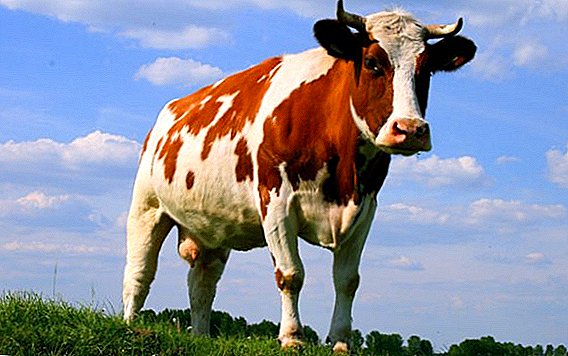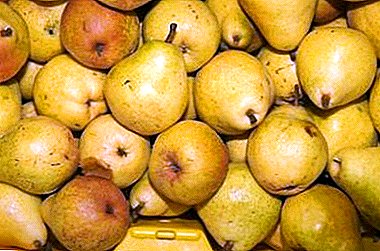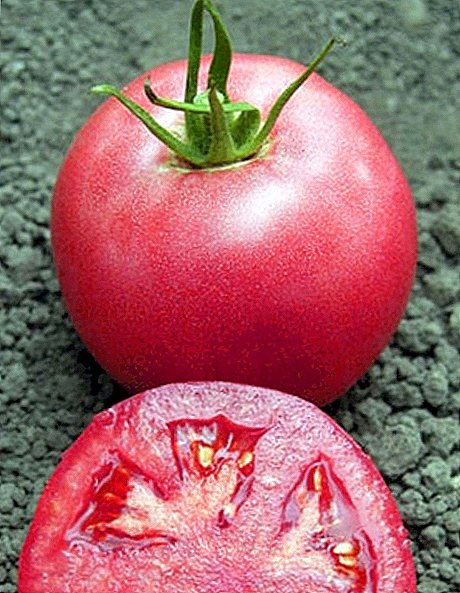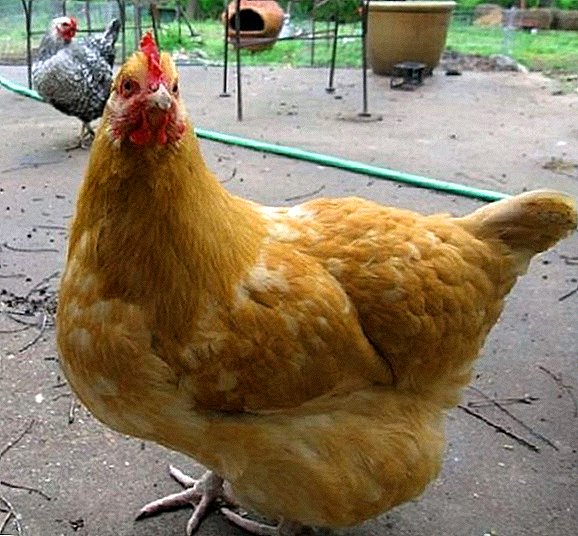 It would seem that the weightier the wedge, the stronger and more productive it is, but this is absolutely not the case. The weight of chickens must be controlled so that egg-laying indicators do not drop. Today we will tell how to identify obesity in layers, what danger it carries in it, and how to deal with it in case of occurrence.
It would seem that the weightier the wedge, the stronger and more productive it is, but this is absolutely not the case. The weight of chickens must be controlled so that egg-laying indicators do not drop. Today we will tell how to identify obesity in layers, what danger it carries in it, and how to deal with it in case of occurrence.
Why is it dangerous
A large amount of fat in chickens that are designed for egg-laying may cause the following:
- Laying eggs can simply stop laying eggs due to disturbances in the reproductive system.
- Overweight chickens are aging much faster - internal organs and the body as a whole wear out and the life and productivity of the bird is significantly reduced.
- Excess fat provokes a decrease in immunity, chickens become more susceptible to infections and pests.
- By reducing the amount of muscle tissue and the formation of fat, the taste of the bird is significantly reduced.
- Obesity causes abnormal liver function, which adversely affects the general condition of the bird.
- Being overweight can cause chicken death.
Familiarize yourself with the rules of keeping and feeding laying hens.

Important! At risk are laying hens that are contained in cages and lead a sedentary lifestyle.
Causes of obesity
To provoke the formation of excess fat can:
- keeping poultry in a limited space without free walking (if birds do not have the opportunity to lead an active lifestyle, fat deposits appear);
- too high-calorie food that does not meet the conditions. In order for carbohydrates not to be a loss to the health of the bird, it needs to expend them;
- excessive amount of food and discrepancy age of layers. A lot of food for poultry is not always good. Mature chickens can not quickly digest food, and metabolic disorders entail overweight.
We advise you to read about how to make fodder for chickens at home, how much feed you need to lay a chicken per day, as well as how and how much to feed domestic chickens.

Symptoms
Determining the presence of the disease in the hens is quite simple, if you know its main symptoms, namely:
- a sharp and massive decrease in egg production - the number of eggs is reduced by 1/3;
- increasing mortality rates;
- too much weight. Any deviation from the norm, which corresponds to the breed and age of the bird, is a reason to sound the alarm;
- change of color, blanching and increase of the scallop (in advanced cases it becomes bluish);
- yellowing of the skin. It can be determined by spreading the feathers of the bird.
Important! Observe the problem of obesity by behavior or change habits of the chicken is impossible. As a rule, their activity does not decrease, they continue to eat and drink well, walk and sleep.

In order to diagnose obesity at an early stage, it will be necessary to conduct laboratory tests, namely: donate blood for analysis. There is no other way to determine the beginning of the disease.
It will be useful for you to read about how to give bran and meat and bone meal to chickens, and whether it is possible to give bread to the laying hens and how to germinate wheat for laying hens.
Treatment
The sooner the problem is identified, the easier it will be to save the chickens and heal them. To combat obesity, it is necessary to apply complex therapy, which includes diet and medications.
Home method
In order to bring the hens into shape and restore their health, you should listen to the following recommendations:
- It is necessary to feed a bird 2 times a day - in the morning and in the evening.
- Use low-fat, low-calorie feed.
- Increase the amount of vitamins consumed by birds, namely, add greens, baker's yeast and vegetables to their daily menu.
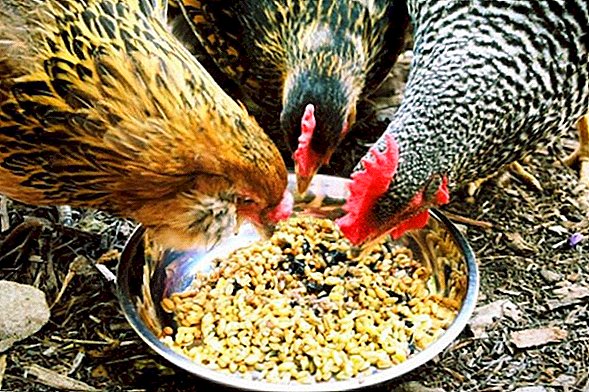 These foods help speed up metabolism.
These foods help speed up metabolism. - Overweight poultry feed should not exceed 170 g.
- It is necessary to provide the livestock with a large amount of fresh purified water, because without it the correct functioning of the digestive system and the organism as a whole is impossible.
- Be sure to give chickens the opportunity to move, that is, to organize free-range walking. Activity in combination with a diet will provide an excellent result in a short time.
It is recommended to read about what to do if chickens do not rush badly and peck eggs, why chickens peck each other to blood, why chickens peck a rooster, do you need a rooster to carry eggs when young hens begin to rush.
Drugs
Medicines are also used to adjust the weight and health of the hens.
In the veterinary pharmacies you can purchase the following medicines, which are added to the food of layers:
- lecithin - mixed with food at the rate of 2.5 g of the drug per 5 kg of food;

- choline - for pullets will require 4 g, and for adult chickens - 2.5 g of medicine per 5 kg of feed;
- methionine - up to 10 g per 5 kg of products;

- "Inositor" - 2.5 g of the drug is stirred in 5 kg of feed.

Did you know? Roosters and chickens are capable of experiencing empathy, they empathize with their fellows, and even miss their separation from them. This feature of the poultry revealed a British ornithologist Joe Edgar.
Food with the addition of drugs give the hens twice a day for 150-200 g. It is worth noting that lecithin has an impact directly on body fat and is considered the most effective.
The remaining drugs contribute to the acceleration of metabolism and the normalization of digestion. It is also useful to add vitamin preparations to the ration of the hens, such as Vitasol, Vitbi and Videin.
Read more about what vitamins chicken hens need for egg production.
Prevention
It is always much better to prevent a disease than to treat it. Guided by this principle, you need to pay attention to the conditions of detention and, of course, the ration of the hens.  When using ready-made feeds pay attention to the indicators of BZHU, they must correspond to the breed, age and method of keeping chickens. If you are assembling the bird menu yourself, then you should take as a rule the following recommendations for portioning.
When using ready-made feeds pay attention to the indicators of BZHU, they must correspond to the breed, age and method of keeping chickens. If you are assembling the bird menu yourself, then you should take as a rule the following recommendations for portioning.
Daily bird is required:
- 95 grams of cereal. These can be wheat, barley, corn, sweet lupine, or oats;
- 10 g of by-products, such as wheat bran;
- 10 g of fish meal;
- 10 ml of skimmed milk.
Learn how to make a feeder, drinker, perch, nest, cage and aviary for poultry.
Laying should be walking, it can be free or limited. The main thing - to give them the opportunity to move, then the excess fat simply will not have a chance. But the cellular content creates all the prerequisites for the emergence of problems with excess weight. 
Did you know? There are breeds of chickens that do not carry eggs. This feature is a consequence of various natural abnormalities, such as narrow pelvis.Now you know that obesity can affect egg production, cause major health problems and shorten the life of layers. In order for your chickens to remain productive for as long as possible, you should monitor their diet and activity, as well as regularly inspect and, if possible, weigh the birds.
Reviews from the network




 These foods help speed up metabolism.
These foods help speed up metabolism.



